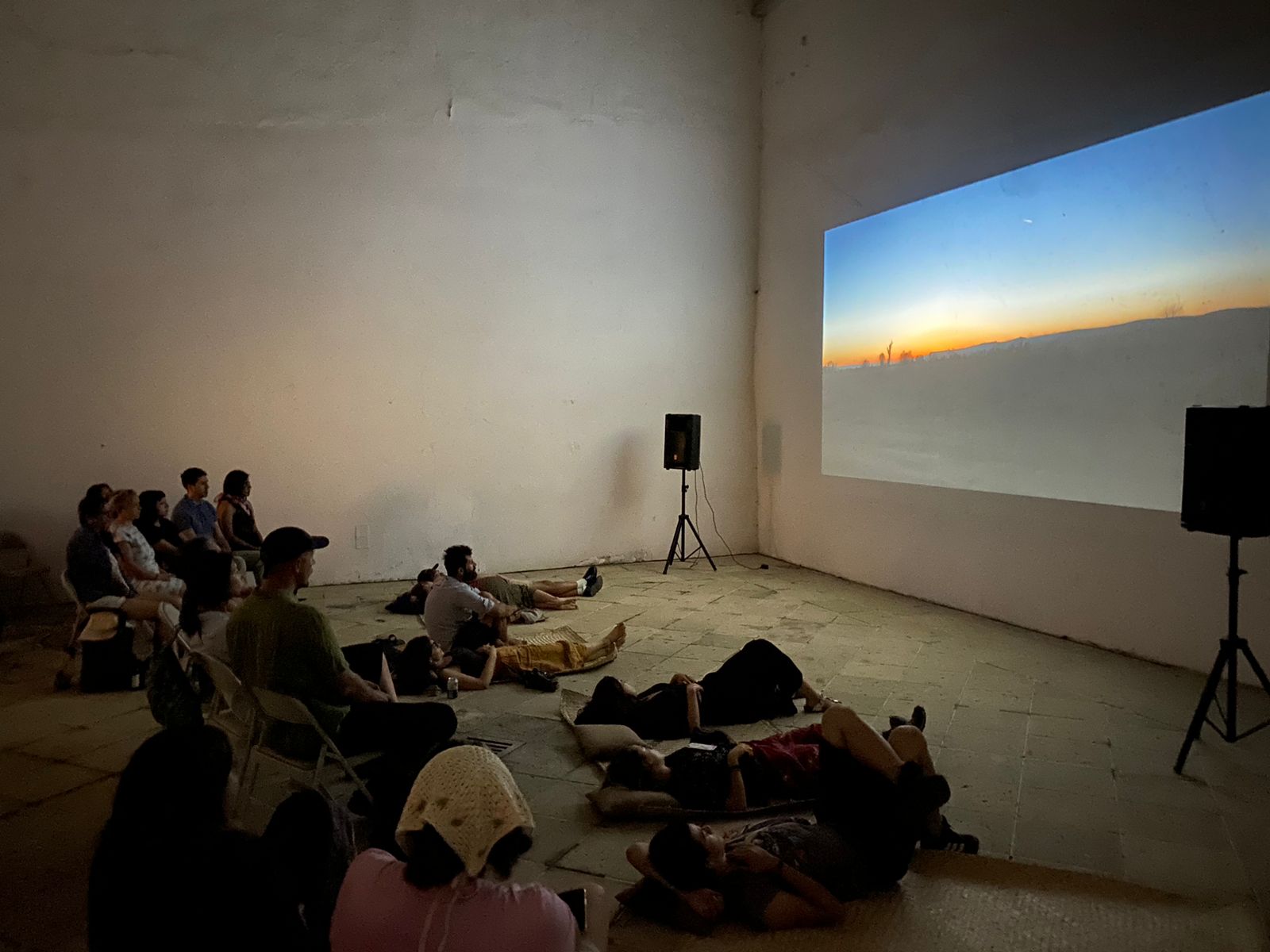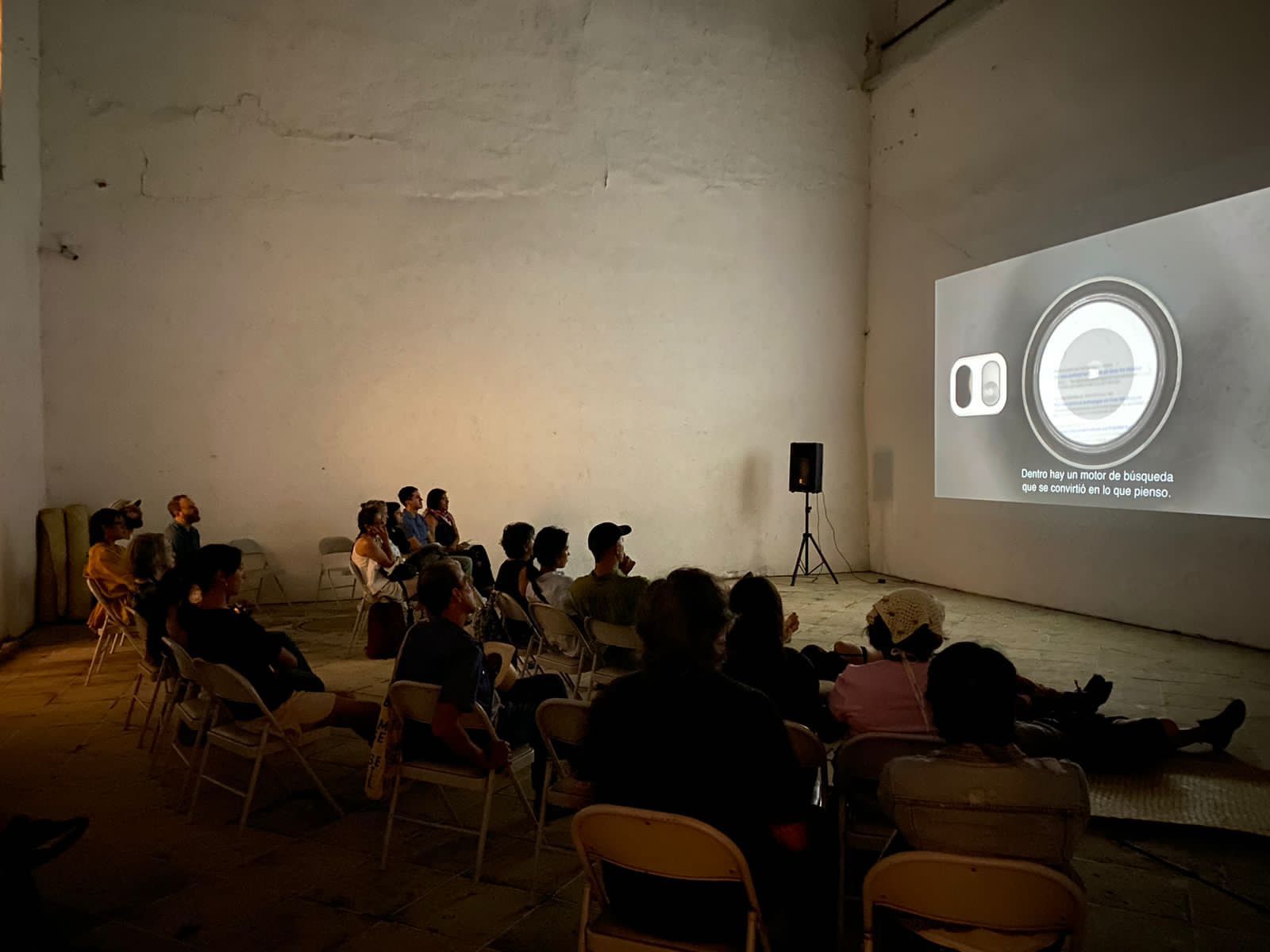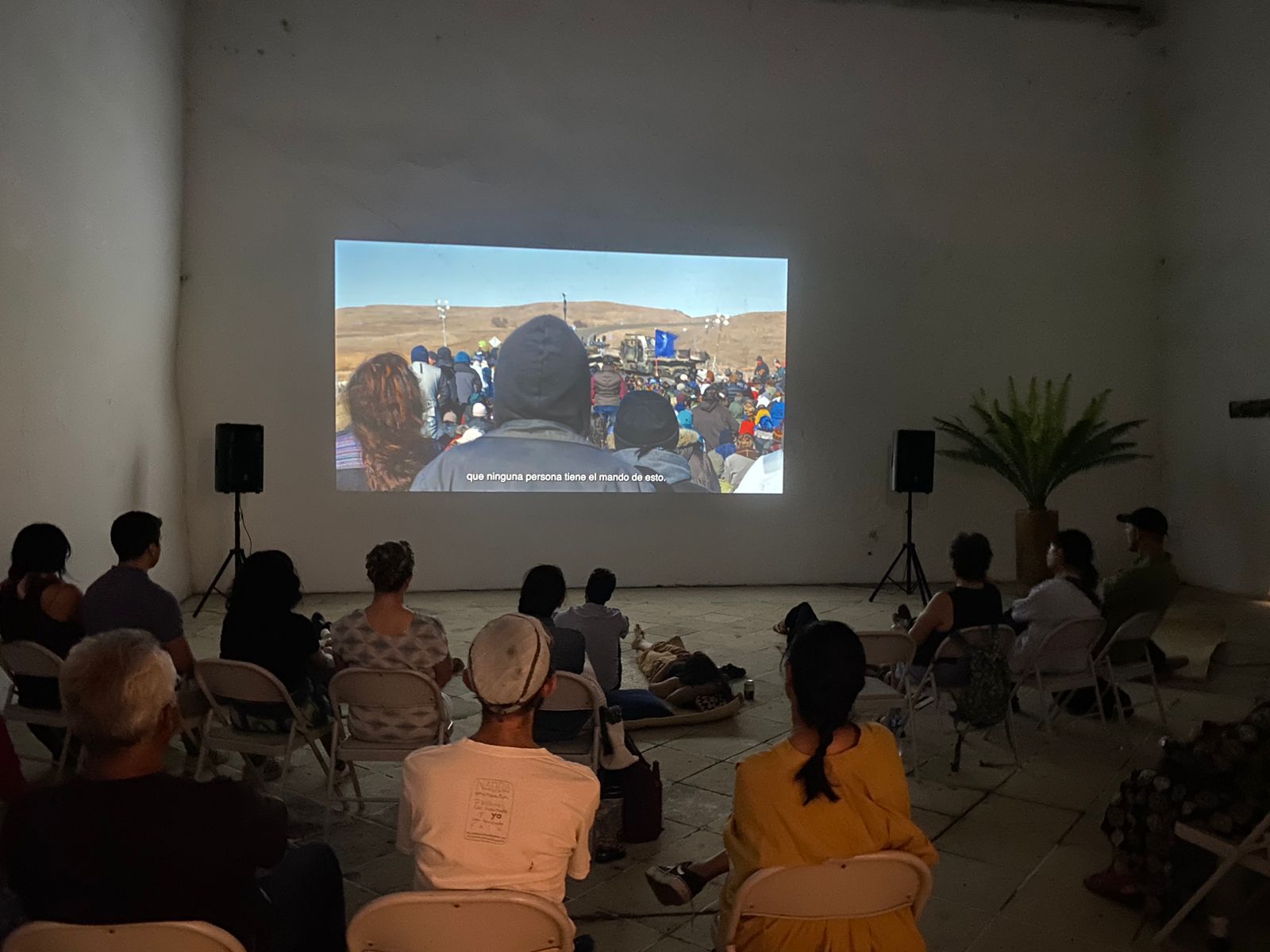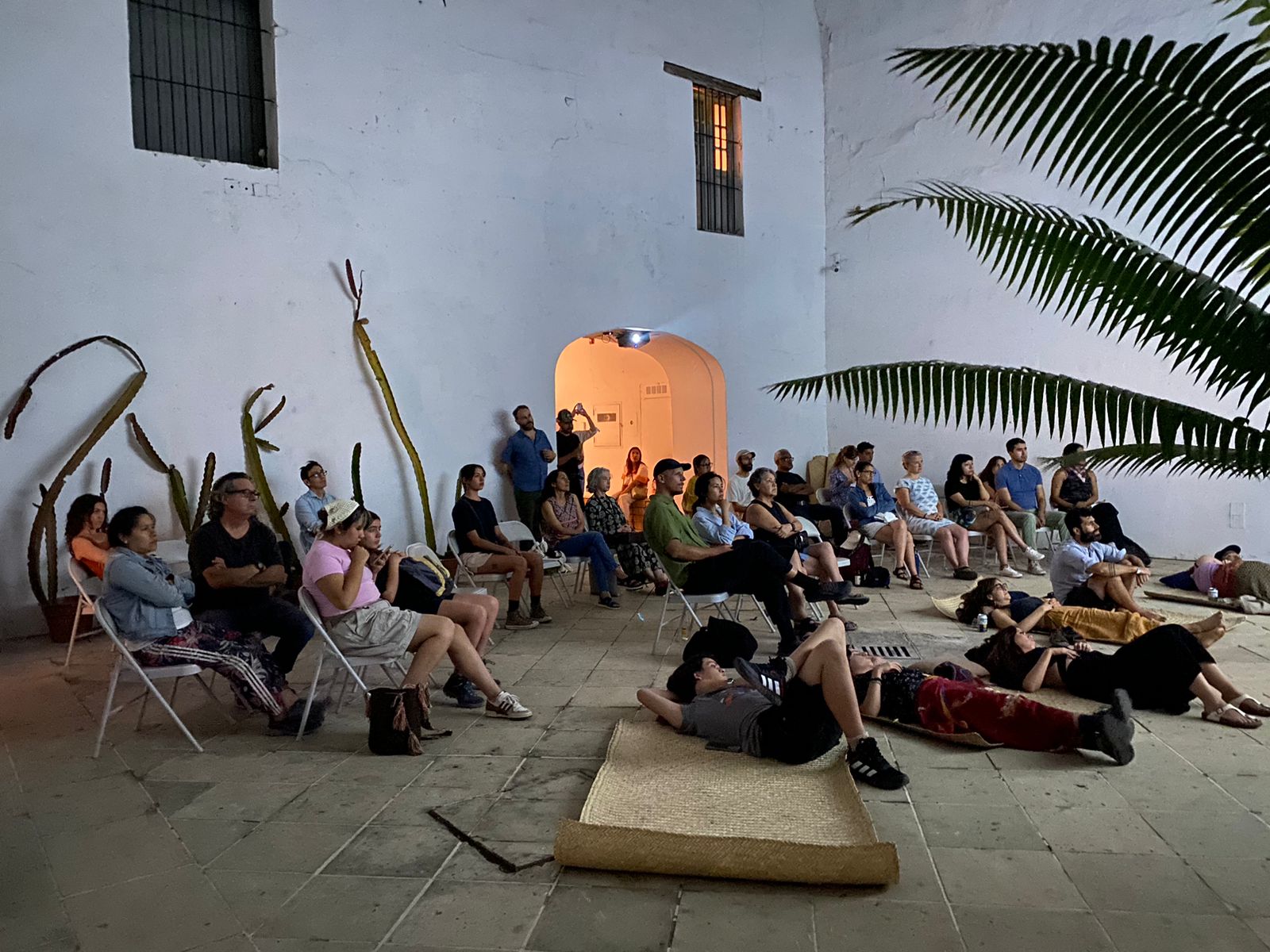
27.04.2023
Open to the public through May 15, 2023
Museo de Arte Contemporáneo de Oaxaca (MACO)
C. Macedonio Alcalá 202, RUTA INDEPENDENCIA,
Centro, 68000 Oaxaca de Juárez, Oax.

More info on the program here.
Under the title Donde empieza el cuerpo y acaba la tierra [Where the body starts and the earth ends], seven audiovisual pieces by contemporary artists from Brazil, Spain, Peru, the United States, Mexico, Colombia and Puerto Rico, programmed by Joseph del Pesco, Kadist’s international director, are brought together. A network of approaches and games of perception that explore, from different perspectives, ideas and affections around the body, land, landscape and territory.
The program involves many layers, as a whole it generates some kind of vertigo. As in a constellation, each piece is part of a larger figure, which questions the limits between the human body and the earth—whether assumed as a landscape or a territory. With works by Ana Vaz, Enar de Dios Rodriguez, Elena Damiani, Sky Hopinka, Colectivo Los Ingrávidos, Juan Covelli and Beatriz Santiago Muñoz, the curatorship provokes a state of reflective and dynamic introspection, a trigger within the viewer’s body goes off.
The bite of a jararacussu snake plunges the protagonist of Há Terra! [There is land] (Ana Vaz, 2016) into a lethargic state that is activated by the cycles of the moon. “Who are the honest people? Are they asleep?” she wonders. The fragment of a story that reminisces about the dispossession of the Brazilian sertão bursts in. “It came from some villages, old people lived there,” says the young woman. “Where are we? I don’t know. We are lost between sleep and wakefulness.” From this feverish state, she transpires the interconnection with the land/territory, which is history and origin at the same time. There is no separation between the body that absorbed the poison and the snake that crawls on the earth.

In Ecotone, an audiovisual essay by Galician artist Enar de Dios Rodriguez, words are the protagonist. A scrutinizing thought, a polysemic inquiry into the notion of field, a multi-referential work that pierces the aesthetic possibilities of visual language. Ecotone is a call to act from the borders, where what is inside and outside coincide. Organized in five chapters, the piece plays around the ideas of a field of research, a field of the form, a field of battle, a field of vision and an empty field. However, everything is constructed from outside the field; from the invisible, it invites us to read between the lines.
Intersticio [Interstice] (Elena Damiani, 2012) explores an unresolved area, a field open to the mystery of the land and its majesty. It traces the topography of a non-specific place, an intermediate zone. The sensation of a permanent search marks the transit of a journey that lacks a precise destination. Damiani draws a mental space of fractured limits whose amplitude is longer than that of any physical space.
Dislocation Blues (Sky Hopinka, 2017) is a portrait of reflections made at Standing Rock, North Dakota, during the historic gathering of indigenous communities and allied people who came together to resist the construction of the Dakota Access pipeline in 2016 and 2017. Standing Rock is the sacred territory of the Lakota and Dakota peoples. Taking the experiences of Terry Running Wild and Cleo Keahna as a starting point, the film presents some beliefs on what it meant to be part of that community in resistance. By exposing the body for a common cause, to defend the territory, individual concerns dissolve: “there was only an us, no one was the authority of anything.” The feeling of dislocation when looking at the movement in retrospect is inevitable, how do we process it? Is it possible to have a critical gaze?

If the body is territory, the earth is there as an open container in which all bodies, remains, and pieces fit. Coyolxauhqui1 (Los Ingrávidos, 2017) makes a hollow, incantation and ritual in which we feel the breath of the earth that receives the inert remains of women’s bodies that we do not identify. It is a lament, a state of audiovisual trance evoked and provoked by the camera/body movements (which are one)—breathing, rhythm, dance. Terror and horror of the feminicidal reality of a Mexico that pierces us.
El Salto [The jump] is the first part of a trilogy of video essays in which Juan Covelli investigates historical representations of the Colombian landscape and reflects on their role in the current imaginary of Colombia and the world—as key instruments in the technology of colonial domination. The Salto de Tequendama is a 152-meter-high waterfall fed by the Bogotá River. The waterfall has been revered for millennia. Today the site is badly damaged and polluted. In his work, Covelli opens up questions around the applications and potential of digital technologies: how do they serve the colonial extraction processes? How might they work differently?
In La cabeza mató a todos [The head killed everybody] (2014), defined by its director Beatriz Santiago Muñoz as “instructions to destroy the war apparatus with an incantation”, words and order are precise. The form affects behavior and thought. The incantation requires that a substantial amount of energy be consumed. The protagonist prepares a bouquet/ritual, certain that all the energy of the galaxy is concentrated at that point. Inner strength. Her feet graze the thick ground. Dance as rebellion.
Ecotone, Intersticio and El Salto observe the territory from the outside, their approach to the landscape is mediated by thought. These works are the product of exhaustive research and documentation processes. The formal proposal of each piece emerges from the integration and tension of the materials found. While Ha Terrá!, Dislocation Blues, Coyolxauhqui or La cabeza mató a todos, build their structure from inside the body/earth.
In the pieces gathered in the program, body and territory are entangled, creating figures of diffuse limits, one feeds from the other in a constant flow. Nothing is disconnected from the influence of the other, everything is a beginning and a becoming. The body is the original territory. Thus, the individual vision blurs, guiding us to understand the complexity of all its interrelations.
What is the distance between my body and the earth? Nothing is ours, not even ourselves.
Tlacochahuaya, Oaxaca, April 2023.

Coyolxauhqui is the Aztec goddess of the moon and the milky way.
Comments
There are no coments available.